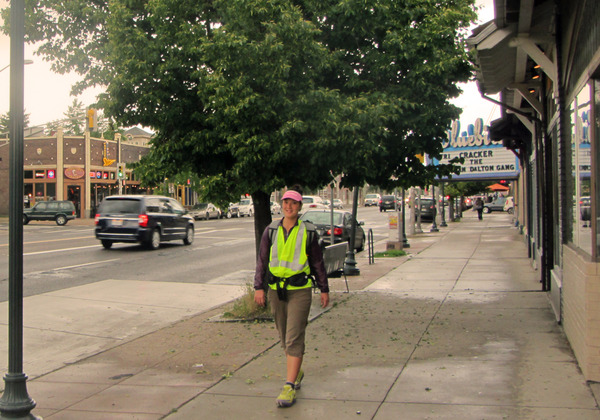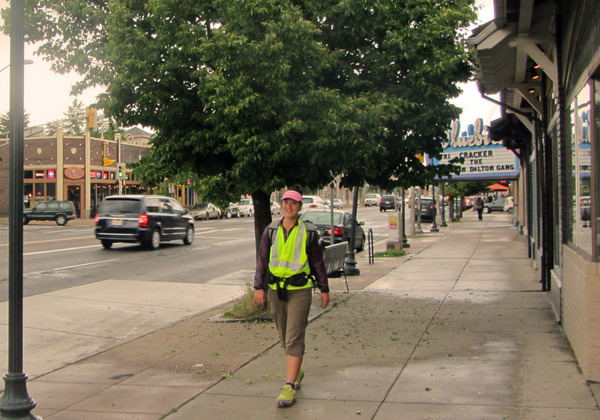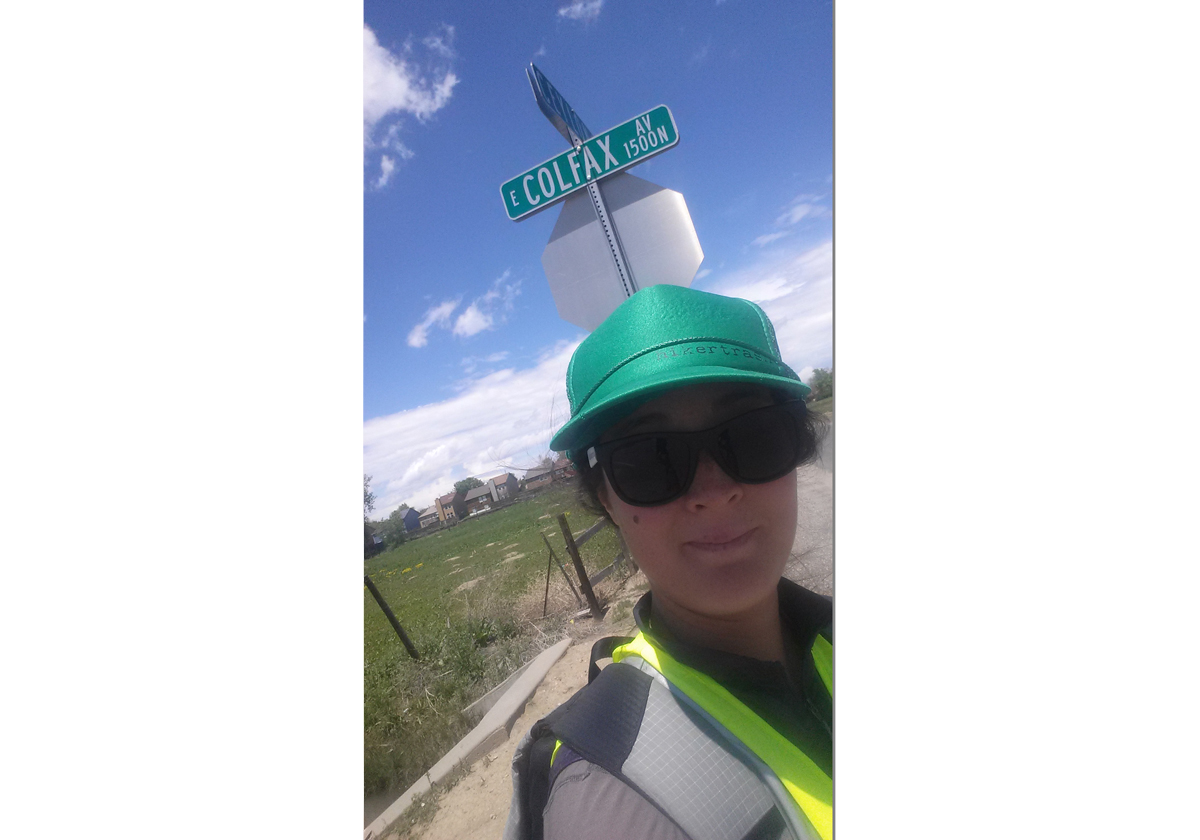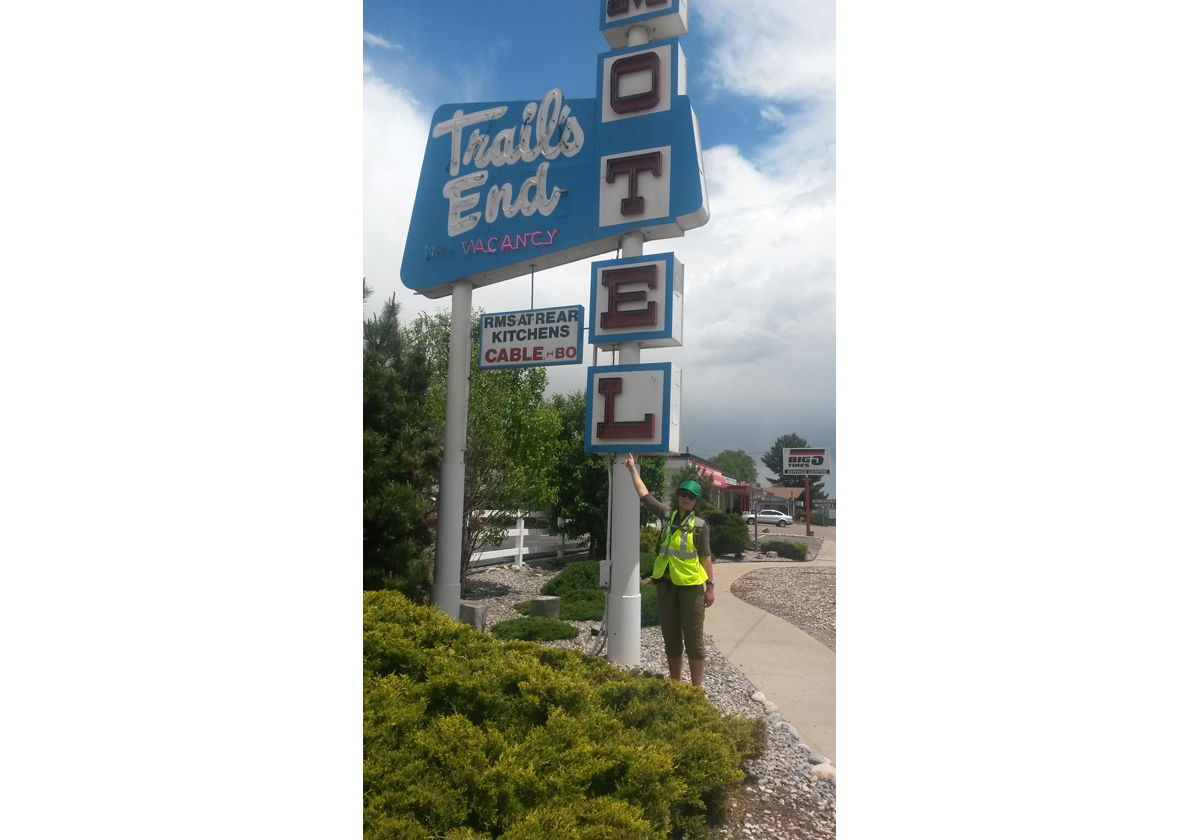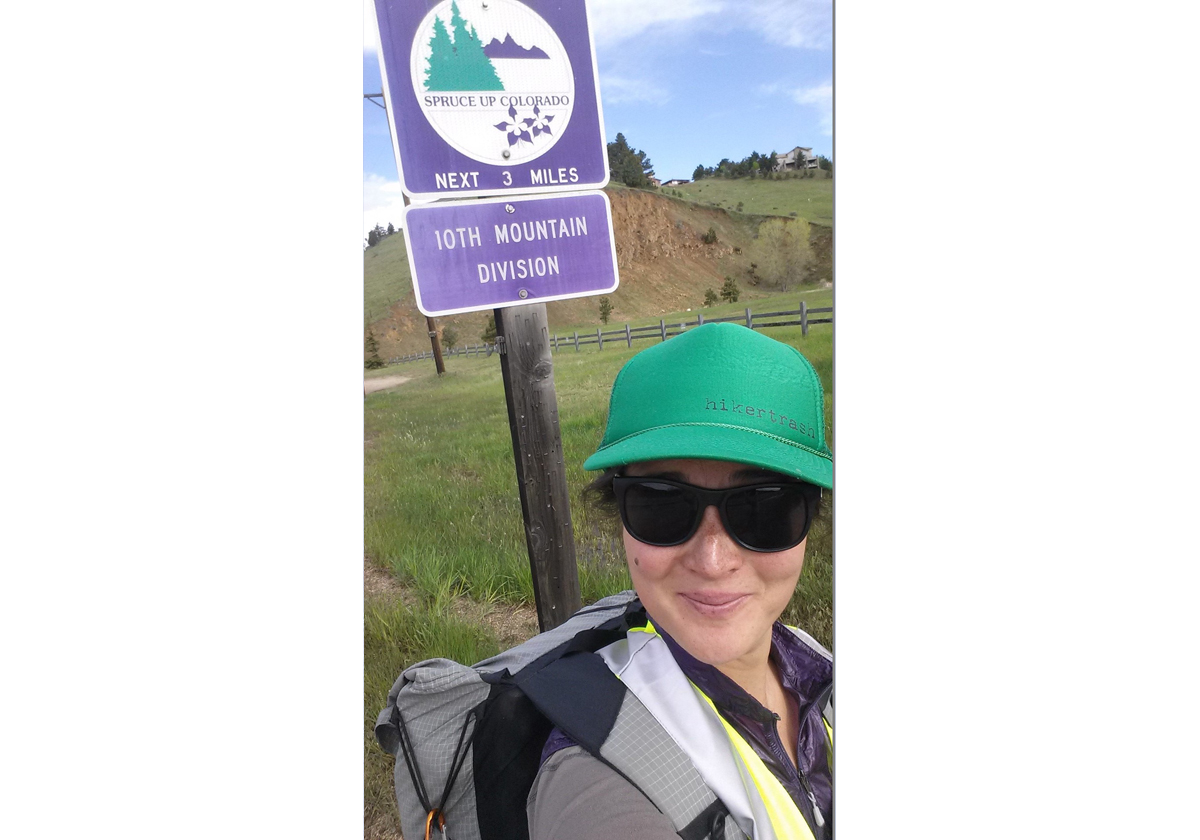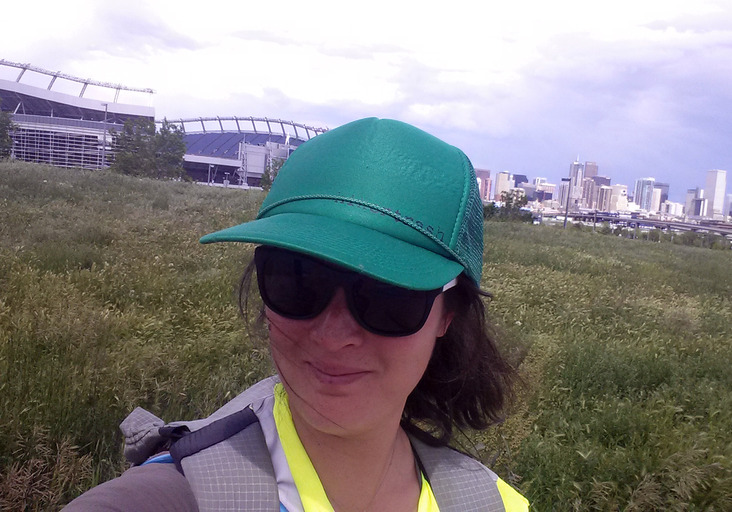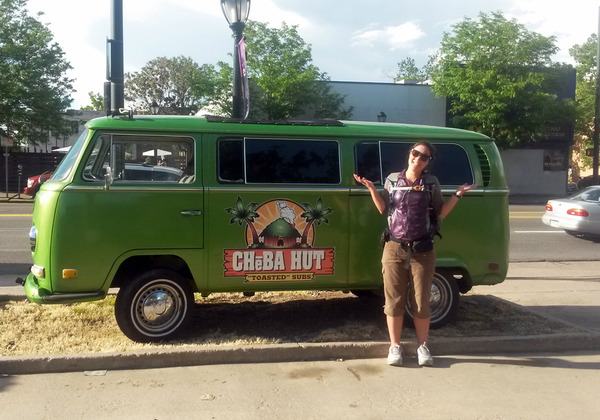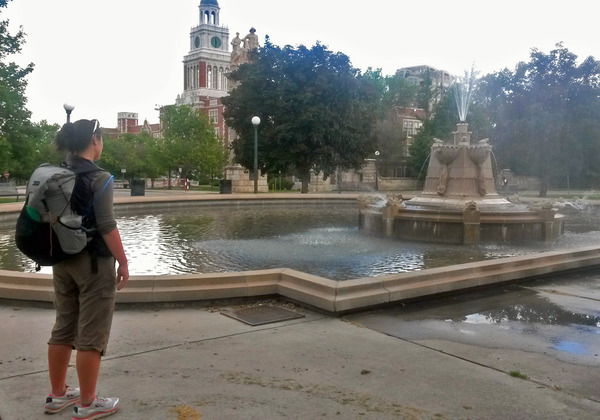The Local newsletter is your free, daily guide to life in Colorado. For locals, by locals.
“I’m already to downtown Denver?” It was a May morning, and Liz Thomas had begun her urban hike down Colfax Avenue around 7:30 a.m. near Genesee Park. Now, she saw a church tower in the distance—the change in neighborhood keying her into her downtown approach. She wore a headlamp on her chest and a yellow vest as she walked against traffic on a route that included navigating stretches without sidewalks or shade. Oddly, the church tower only broke the skyline of a strip mall, Thomas realized as she drew closer, which caused her to laugh out loud. She was only to Casa Bonita.
A professional hiker and environmental consultant, the 29-year-old Thomas took on her two-day, 52-mile walk of Colfax to get a feel for the metro area. Best known for setting the women’s speed record for hiking the entire Appalachian Trail in 2011, Thomas—a Sacramento native who now calls Denver home—has explored other cities on these urban hikes, including Los Angeles and San Francisco. “I think urban hiking is a really cool way to see the city,” she says. “You get a feel for the city in the architecture, the gardens, and the history.”

Because Colfax is part of U.S. 40, Thomas decided to start her walk in the mountains before the avenue officially begins around Golden. Mostly, the hike is a chance for Thomas to think, train, explore, and listen to NPR podcasts. On Thomas’ trek east, she passed the historic Golden Hills Cemetery before venturing into what she calls the “kitschy” part of Colfax. The section west of Denver includes Casa Bonita, an abundance of liquor stores, marijuana dispensaries, and cheap motels. “One of them was actually called, ‘The Golden Hours Motel,’” she recalls.
(Read 13 little-known secrets about Denver)
When Thomas finally arrived in Denver, she had to navigate the junction at Colfax and I-25, and the dangers of a city not always designed for pedestrians. “The sidewalk ends and you’re supposed to go on a crosswalk that’s one lane wide, right in front of the on-ramp for I-25,” she says. “There was another pedestrian on the other side and we were looking at each other like, how are we going to do this?”
That night, Thomas crashed with friends a couple blocks off Colfax in Capitol Hill. She felt good after one day of hiking, but the second day would be longer. She awoke early and trudged on, working her way toward East Colfax. “I got a text from this guy who I consider my most street savvy friend, and he said, ‘Don’t walk East Colfax alone.’” The warning went unheeded.
Thomas immediately noticed that East Colfax is less renovated than the area around downtown, but no one bothered her as she walked through East Denver and into Aurora. “I think a lot of people, especially people who grew up in Denver, have this perception of Colfax that it’s super sketchy. They never want to walk it alone, especially as a woman,” she says. “I think that people are people wherever you go. They’re just living their lives.”
Past the University of Colorado Denver’s Anshutz Medical Campus and I-225, the road stretched out before Thomas, and her surroundings grew quiet. There were fewer businesses, and finally farmland. On into the evening she walked, reflecting on Denver’s most iconic street—one Playboy magazine dubbed “The Longest and Wickedest Street in America” in the 1970s. “I think there’s this sense that by walking it, we take responsibility for the Colfax we created,” Thomas says, reflecting on her walk. “And so, if there are areas where we feel less safe, as a community [it seems like] we kind of neglected them.”
Near the end of the second day, the only sign of the avenue or civilization lay at the intersections with street signs reading “Colfax.” Around 8:30 p.m., Thomas reached Strasburg, the meek end of her great urban hike, which culminated at a fork in the road where Colfax becomes 15th Avenue, and then U.S. 36. Thomas’s journey had ended, but the experience will stay with her.
You can follow Liz Thomas on her website, Facebook, or Twitter.



